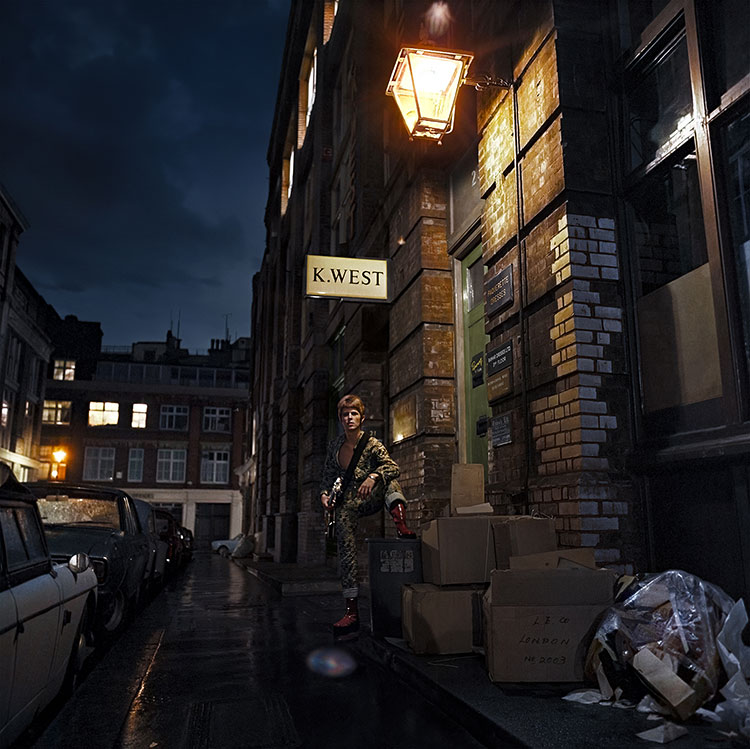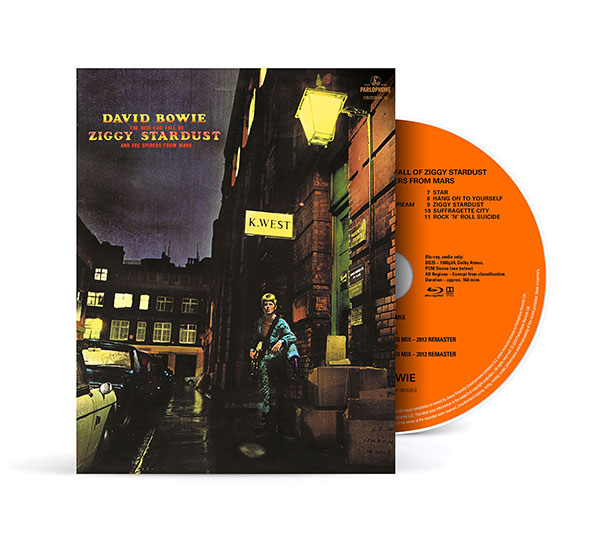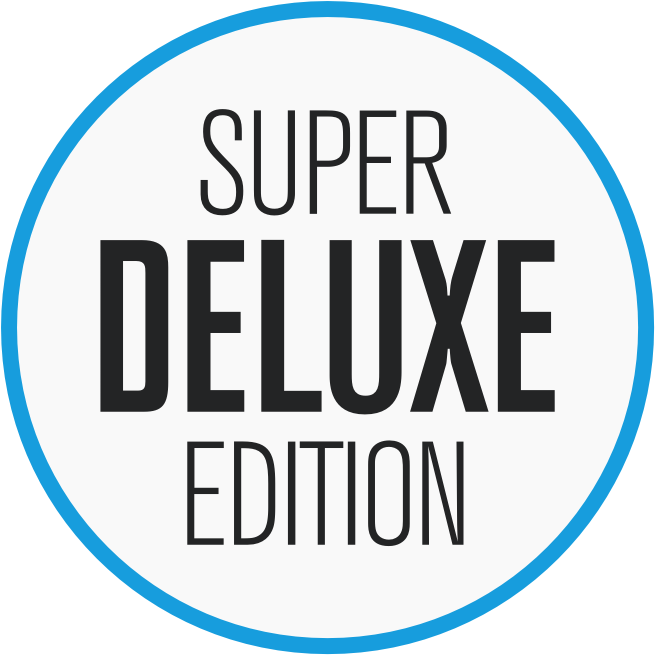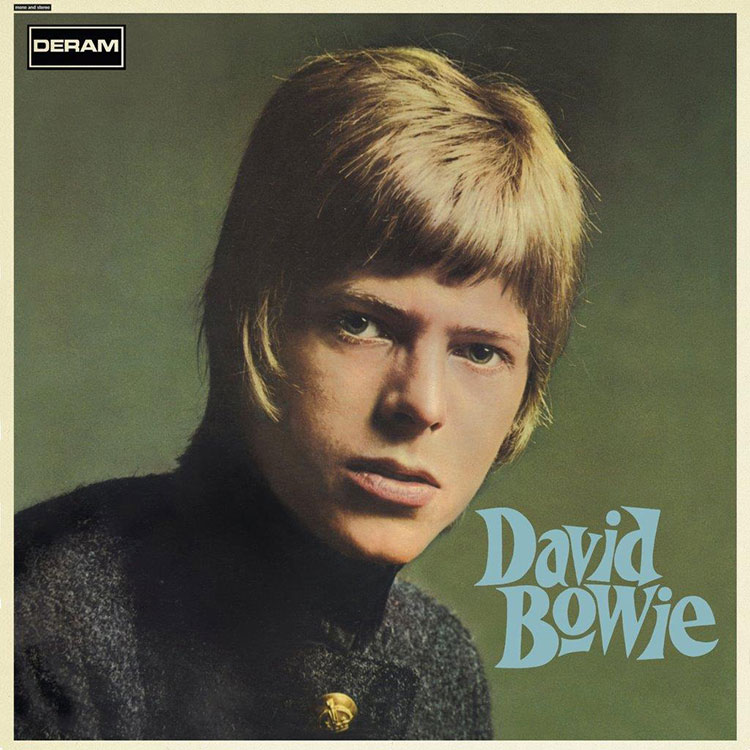Ken Scott on remixing David Bowie’s Ziggy Stardust album
“I was bored to tears with it after 50 years – now I’m excited by it”

David Bowie’s 1972 album The Rise and Fall of Ziggy Stardust and the Spiders from Mars has been remixed in Dolby Atmos by Ken Scott and Emre Ramazanoglu and is released on blu-ray this Friday. SDE recently caught up with Scott, who of course co-produced the original album, to ask him more about the record and the Atmos remixing process.
SDE: Let’s talk briefly about the recording sessions for the album. You obviously had a busy 1971 because you did Hunky Dory as well...
Ken Scott: Amongst many others! It was busy, yeah. Look, it was a great period then, because the recording contracts were such that acts had to come out with an album every six months. So the recording process was so quick. Both Hunky Dory and Ziggy took two weeks each to record and a week to mix.
When it came to doing this record, was there any kind of brief from David in terms of the sound he wanted?
Nope! All he said was, it’s going to be more rock and roll than Hunky Dory.
Is it true that a lot of this album was recorded almost live, in the studio?
No more than Hunky Dory or Aladdin Sane. It would bass, drums and sometimes electric guitar; sometimes acoustic guitar and sometimes piano. But the two main things that always went down first were bass and drums, and then it was whatever would work best on top of that. Sometimes rough vocals, but not always
You have mentioned before, I think, that David’s vocal performances were superb in terms of getting it down first or second takes. Is that very much the case?
Yeah, of the four albums [Ken made with David], I’d say 90 to 95 percent of of the vocals were one take, first take, from beginning to end. It’s just amazing.
Does that mean you didn’t really need to do much dropping in, to fix things?
None [laughs]
That’s quite surprising. He was obviously a brilliant vocalist, but was that unusual for for someone to be able to do that?
I’ve never come across another performer in the studio like that. From him, it was always a performance. In technical terms, they’re not perfect; they’re sometimes not quite in pitch, sometimes they’re not quite in time, but they’re coming from deep within him, and it’s a performance, and that’s what makes it work.
Did David always know when he’d got the one, or would he would he say, “let’s try it again”?
No. He knew. There were times when Ronno [Mick Ronson] and I would hear something when he was putting it down and we’d go “we’ve going to have to punch in for that” and then we’d hear it back, and it was absolutely intentional, and it worked perfectly.
When you were recording the album, did you feel like this might be the commercial breakthrough?
It was always a case of ‘who knows’. We weren’t specifically making records for a particular market or to sell. We were making records that we would be happy with and that we’d like to listen to, later. It was that kind of thing. And if other people liked them, that was great.
When David was in the studio, how much of this Ziggy spirit / character did he bring in, or was that not really there at all and he was just a working musician, recording a song?
Got it! [laughs]. Look, one of one of David’s biggest talents was the ability to get together a team that would give him exactly what he wanted, without him having to direct them too much as to what to do. When he wanted the American sound, he went over and he got a bunch of American musicians, American producers, and everything, and he’d just show them a song, and say, let it go, do what you do? That’s why you put them together. And it was the same with with The Spiders.
In terms of the technicalities, was this a 16-track or 8-track recording?
16-track.
And that gave you enough freedom? Were you having to bounce down? Did you have enough tracks to separate drums and do all that kind of thing?
It depends what you mean by separate drums. These days, every individual drum is on its own track, but back then, no, it would be stereo drums. We might have snare on its own track sometimes, or a bass drum on its own track, sometimes along with the stereo drums. But back then, one of the things of only having two weeks was you had to make decisions. And so we we decided what it was going to sound like, right from the get go, so I’d get the drum sound that would work, and we’d carry on from there.
The reason I mentioned that is, obviously that becomes pertinent later on with the 5.1 and the Atmos mixing and all that, which we’ll talk about shortly. Back to 1971: were you acting like an intermediary with the record label when they were checking up on progress?
The label never checked up on progress. And the management had signed David because they believed in him and put him in the studio to do what he does best, which is create,
But what about ‘Starman’? That was a late addition because someone, somewhere said, “Look, there isn’t really a single”.
The record company, RCA, once they got the finished thing, said it was great. The album’s great, but there’s no single. I’ve checked up on this, in terms of whether David had ‘Starman’ already written, but no, he wrote it specifically, a few days before we recorded it.
I find that very interesting. It’s like art meets commerce, isn’t it? It’s still brilliant song, but he kind of he delivered what they wanted.
Yeah, absolutely, yeah.
Now you’ve obviously revisited this album in the past. In 2003 you did a 5.1 mix and a new stereo mix
No, no, no. Hang on. Let’s get that bit straight. The record company made the stereo from the 5.1. I wanted my name taken off it because the stereo that was made from that was so bad. It was never meant to be folded down to stereo.
So it was just a fold down version from the 5.1?
Absolutely. And it’s awful! The 5.1 is not great either, but…
Well tell me a little bit about the 5.1 then, because that would have been the first time anyone was trying to do a surround sound mix with this particular record, so you would have been going back to multi-track tapes, dusting them down, baking them and all that kind of stuff.
Actually, the tapes didn’t have to be baked from that period.
It would have been just over 30 years later at the time you did the 5.1 mix [2003], did you choose to try and fix anything or change anything, or did you keep strictly to the whole EQ and the vibe of the original record?
We kept to the original, and one of the main reasons for that was when I was approached to do it by the label, I said, “Look, there are two ways we can do this. I can either modernise it a bit, change things, or keep it the same as it was”. They said “We’d love to have both, but we can only afford one, so keep it the same as the original”. So that’s what it was. It was the original, just [with elements] put in different places [channels].
Of course, David was still with us back then. How involved, or not, was he with the whole 5.1 at that time?
Not! He was never involved. He was only involved in mixing of two songs of the four albums I did with him. He didn’t like to hang out in the studio mixing. Hearing the same thing over and over again getting it right…
I guess he was so prolific in the 70s in particular, that disinterest in mixing gave him the freedom to move quickly onto the next thing.
Yeah, once he’d finished something, his part of it, he was off.
So you don’t reckon he would have even listened to the 5.1 anywhere at the time, in a studio in New York or something like that?
I don’t know. No idea.
The record labels over the years have always had a rather ‘ad hoc’ strategy towards Bowie and surround sound. Some albums have been done, like Station to Station and Young Americans and some have not. I always wondered whether if David had some issue with surround sound in general.
Not that I’m aware of
With the new Atmos mix. You’ve worked with Emre Ramazanoglu. Tell me a little bit about, roles and responsibilities and how the two of you work together on this project.
It was absolutely fascinating for me, because my background is as an engineer. I’ve tried a couple of times working with another engineer and just sitting at the end of the desk, as the real producers do, but I found that I would be listening to the sound too much… telling the engineer, “Okay, let’s hear a bit more high end on that cymbal.. no, no, down a bit”. I’d waste time doing that, whereas when I’m the engineer, I just reach over and do it. So that’s the way, over 60 years, I’ve generally done it. When they first brought up the whole Atmos idea, I thought “Oh, that’s great. I can do a lot of it at home and then just go into a studio to finalise it”, but as soon as I started to delve into Atmos, I realised there is no way a 75-year-old is going to ever learn all of that that quickly. So I realised I had to find someone, and I’d met Emre, we’d spoken about Atmos, and so we spoke [again], got together and it was bliss. We were both of the same mind. We knew exactly what was needed. It was great.
How long did it take then to work through the whole record?
It took 10 days. But I’d done a lot of work before that. I went into Abbey Road, number two studio and fed stems through to get room sounds and all of that kind of thing. Also, as I had control for a change – I wasn’t being told by the record company it has to sound like the original or anything like that – I insisted that I should be able to change it up. Look, the whole glam rock sound was very much the 70s. Now we’re in the 2020s and it needs to be different. And the main thing that characterised the whole glam rock thing was the very, very dead drum sound. And so I wanted to change that drum sound. So I added samples to what Woody [Woodmansey] was playing. I never got rid of any of Woody’s parts, I just added sounds to them, to bring it more to a modern type of [drum] sound. And so that took a while! Jesus, going through with the hi-hats, like matching up every single hi-hat… it gets boring to say the least.
Can you expand a little bit on this?
Several years ago, I did a drum sample library called Epic Drums. And what it was, I used five drummers that I’d worked with in the past to emulate the sounds as close as possible. One of the drummers was Woody, and so I I got to use some of Woody’s drum sounds from that to match up with what we already had. And just change it around a bit, make it not as dead as it was, just more open tom sounds, more open snare. And also, at the time, I hated cymbals. Now I quite like cymbals, but because the drums were stereo, I couldn’t bring up the cymbals without bringing up everything else. So I had to also put cymbals to match up to those [on the tape] so that it feels natural. Everything’s gotta be exactly in time with what what he played.
Did you take that approach with anything else, or was it just on the drums?
Just the drums, that’s the only one you can really do, because the guitar is the guitar. Yes, we would have added room sound to it and that kind of thing, so we would have changed it a little bit in that way, and maybe the EQ would have been slightly different, but a guitar sound, is a guitar sound, is a guitar sound, basically… whereas the drums can vary an awful lot.
I think I read an interview in the 90s, where David Bowie said looking back on it, he thought the sound on Ziggy was a bit on the ‘thin’ side. I’m sure he was really happy with at the time. But is that fair comment from him?
Absolutely fair, but it’s also slightly revisionist, because back in the day, because we were dealing entirely with with vinyl and you couldn’t have as much low end or anything as we could in the 90s with CDs, or as we can today with streaming and everything. So, yeah, at the time it was fine but as we got used to more low end it started to sound thin.
You’re making all these changes, but how does the Bowie estate figure in all this? I mean, they might be saying “well, hang on, Ken, we’re not sure we want you to do that…”.
No, no, they were right behind me all the way. Look, David was different to most artists in many ways, but one of the other ways that he was different was that he insisted that if anyone was going to do any work on on his past product – and I hate the word ‘product’, but that’s the general term – it had to be the original people. So I get to work on the four albums that I did with him, Tony Visconti gets to work on the albums he did. Harry Maslin on his, which is great because most artists don’t do that.
I’m glad you’ve said that because I was going to ask you that very specific question. That makes a lot of sense, and it’s obviously great that people like yourself and Tony are still around to do this.
And we can still hear! [laughs]
With the Atmos Mix, did you need to go down the road of using any AI to do anything such as separating music fused together on the same track?
No. Straight from the 16 track.
There’s a new stereo mix of the album on the blu-ray which – like the Atmos Mix – isn’t on the Rock ‘n’ Roll Star! box set. Did you want to do the stereo mix, partly because of the previous issue with the other stereo mix, and also to make the most of the improved drums that you were talking about?
Well, absolutely, but it initially came from the fact that Apple insist that their immersive audio matches up to the stereo mix. Now that’s fine if you’re dealing digital because it always runs at the same speed, but with analog tape, it never runs at the same speed twice. So matching up a stereo mix with a 16 track multi-track is almost impossible, unless you go in and you start to use things like Elastic Audio to move them into the same time and but then you lose quality doing that. So what I said was, “Look, I’ll do the Atmos, but for Apple, for everyone, I’ve also got to do a brand new stereo mix”. And we did it an unusual way because Emre said the normal way is to do the stereo mix first, get that perfect, then do the Atmos. But we did it the complete opposite way; we did the Atmos first, and then got the stereo from that, and it was amazing. It’s a fold-down, yes, but because of the way Emre sets everything up, it worked perfectly. I think there were two songs that we had to boost or cut the vocal like one dB, just to sit it in or bring it out a little bit more. And that was it. Otherwise, it was perfect.
Were there any songs on the album that you thought worked particularly well in Atmos?
I love ‘Rock and Roll Suicide’, the way that turned out… but just the whole album. I was bored to tears with it after 50 years, come on, and now I’m excited by it. I listen to it in the car all the time, the stereo version. It’s the response that I’ve received from fans that have heard it, and hi-fi enthusiasts and all that kind of thing. And Woody, the drummer. Woody said “When I heard it, I felt as if I was in the band”. And he didn’t mean that in a funny way. He meant that he felt as if he was in there with the band, the way it used to be. The whole album has come alive to me again.
Finally, Ken… You did a remix of ‘Life on Mars’ a few years ago when there was a some focus on Hunky Dory. Are there any plans to do Hunky Dory in Atmos or maybe Aladdin Sane? Has anyone talked to you about that?
No. You’d have to ask Parlophone about that.
Thanks to Ken Scott who was talking to Paul Sinclair for SDE. The Ziggy Stardust Atmos Mix is released on blu-ray on Friday 6 September. Order your copy from the SDE shop.
Tracklisting

The Rise and Fall of Ziggy Stardust and the Spiders from Mars David Bowie / blu-ray audio
-
-
2024 Dolby Atmos Mix, New 2024 Stereo Mix (192/24), original Stereo Mix (96/24)
- Five Years – 4:42
- Soul Love – 3:34
- Moonage Daydream – 4:40
- Starman – 4:10
- It Ain’t Easy – 2:58
- Lady Stardust – 3:2
- Star – 2:47
- Hang On to Yourself – 2:40
- Ziggy Stardust – 3:13
- Suffragette City – 3:25
- Rock ‘n’ Roll Suicide – 2:58
-

 Interview
Interview



By Paul Sinclair
32